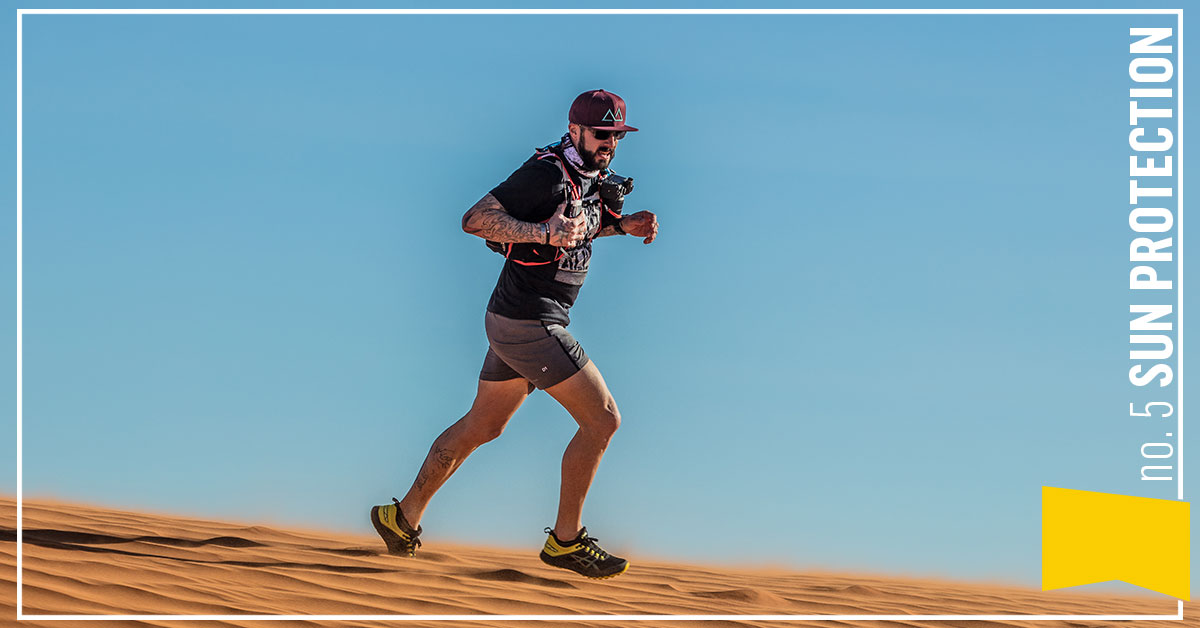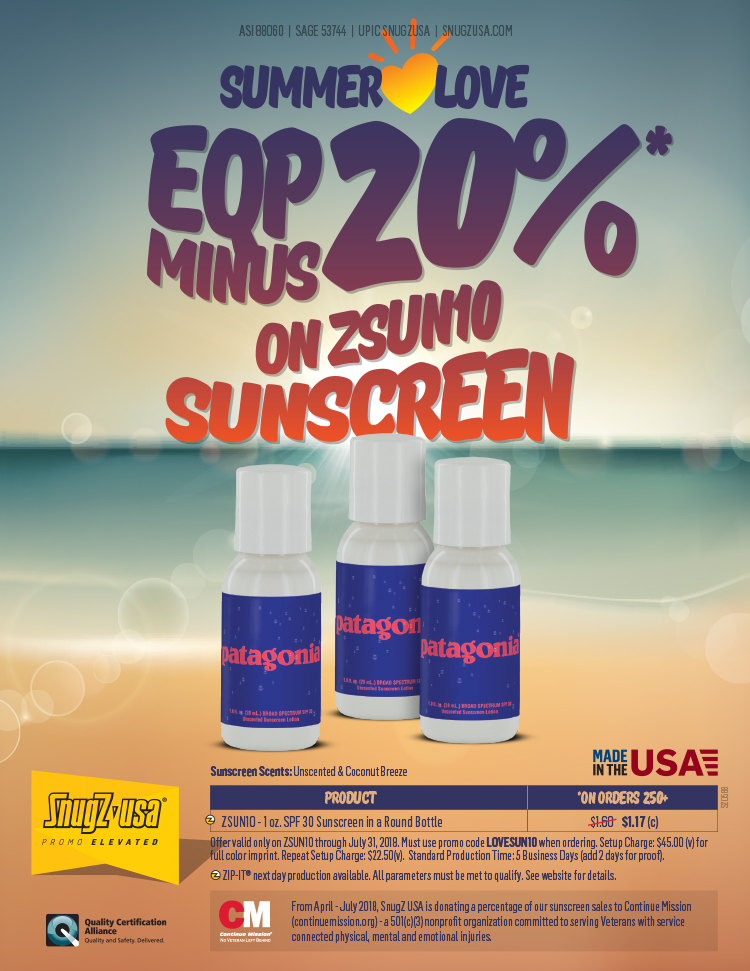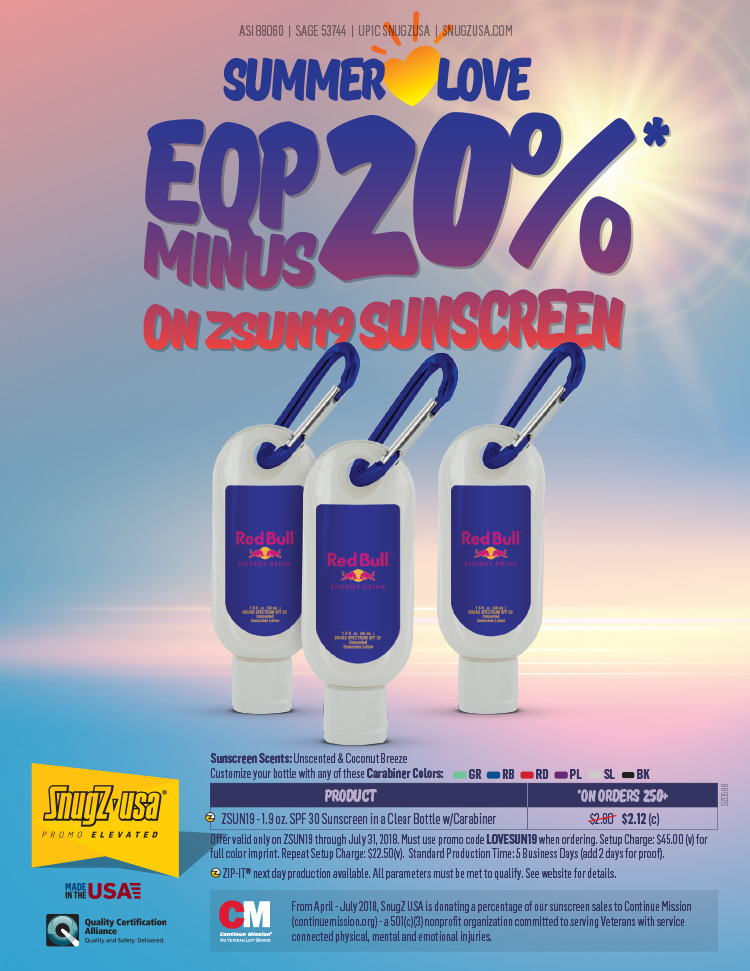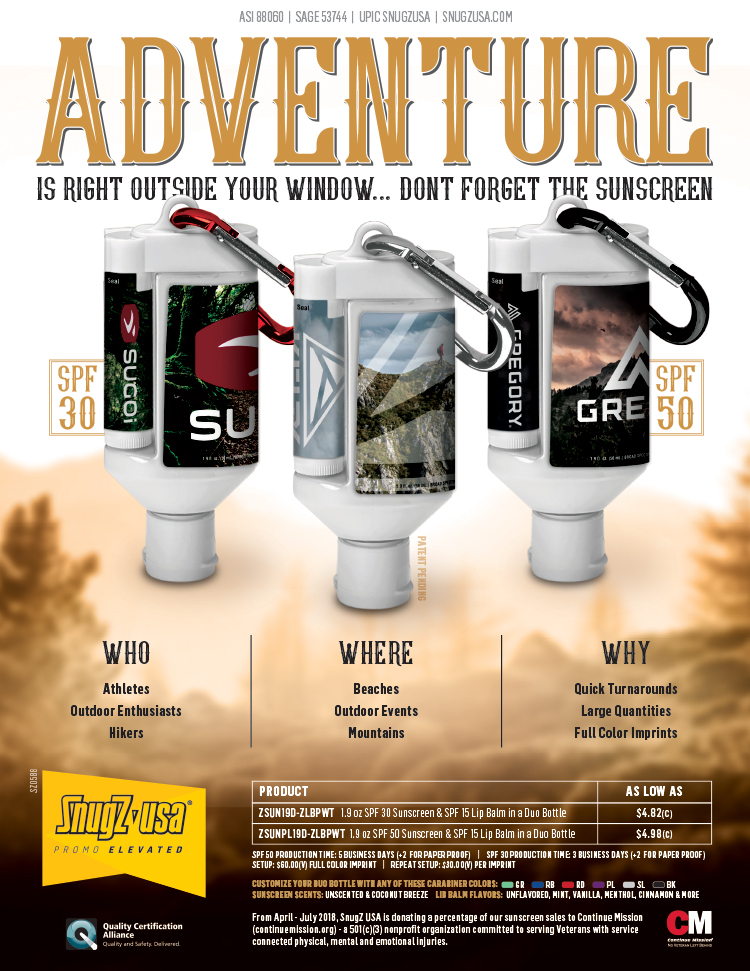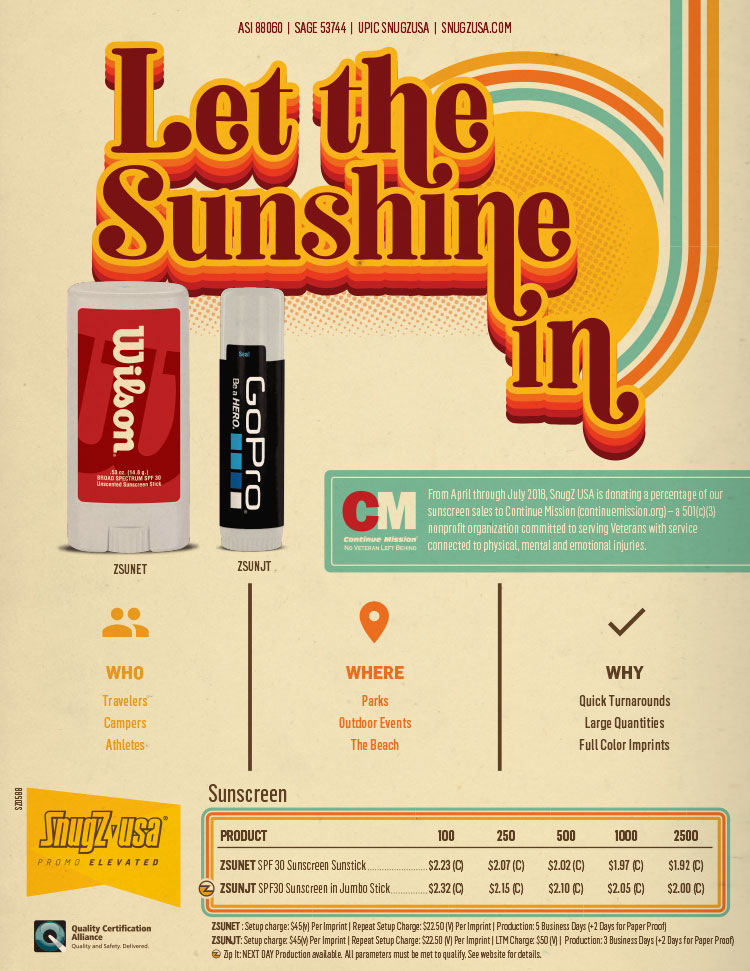Meet Ben Altenes. Veteran, photographer and ultra runner.
He’s the kind of guy who refers to a 20 mile trail run as “afternoon fun”. Ben is also a US Army Veteran and began running as a positive way of dealing with PTSD. Being active and outdoors can be extremely therapeutic. That’s why SnugZ is donating a portion of all sunscreen sales from April through July 2018 to Continue Mission – a non-profit organization committed to serving Veterans with service connected physical, mental and emotional injuries.
After Ben’s military service the camera became his outlet, that tool to bring along with him just like he brought along a weapon during combat. Out on deployment, everything around him had to be a tool he could use and trust. Protective gear and equipment he needed being out there alone. Same concept applies to trail running. Ben still needs the proper gear to protect him in the backcountry like shoes, high quality sunscreen and a camera to tell the story. Ben’s Continuing his Mission by creating a story and a journal through his photography. NOT WITHOUT COMMITMENT. NOT WITHOUT COURAGE. NOT WITHOUT SUNSCREEN.
Not all sunscreen is created equal.
Therefore, it can be overwhelming to know which products you can trust and those you should avoid. Don’t worry! We’ve done the research for you. Keep reading for the attributes you should look for in high quality sunscreen.
SPF
SPF or Sun Protection Factor is a measure of sunscreen’s ability to prevent UVB from damaging the skin. Well, now you might be thinking to yourself, “What’s the difference between SPF 15 and SPF 50 sunscreen?”. Let’s break it down into the percent each SPF filters out:
SPF 15 – 93% of all incoming UVB rays
SPF 30 – 97% of all incoming UVB rays
SPF 50 – 98% of all incoming UVB rays
Difference in protection is minimal, but if you have sensitive skin, or your family has a history of skin cancer, an extra 5% can make a large impact. No matter if you are using SPF 30 or 50, no sunscreen can black all UV rays.
Broad Spectrum
Broad spectrum is a term that is often synonymous with sunscreen, but what does it actually mean?
Two types of UV light can damage your skin – UVA and UVB. Broad spectrum sunscreen products protect you from both. The first can prematurely age your skin while the latter can cause your skin to burn (something we are all too familiar with). Personal care products being sold and labeled as broad spectrum sunscreen must be tested and meet the updated FDA standards on a regular basis. Make sure your sunscreen of choice is up to par.
Oxybenzone-Free
Oxybenzone aka benzophenone-3, BP-3, and 2-hydroxy-4-methoxybenzophenone. Wow that’s a mouthful. So, why is it bad?
Environmental Working Group says the chemical oxybenzone is being added to nearly 65% of non-mineral sunscreens as documented in their 2017 sunscreen database. Oxybenzone is a chemical found in some flowering plants. However, it is now being commercially produced from benzoyl chloride with 3-hydroxyanisole. Research suggests that chemical sunscreens are absorbed through the skin and make their way into the bloodstream. EWG, among other toxicology experts, believe it is linked to hormone disruption and potentially to cell damage that may lead to skin cancer. Double check the label to ensure your sunscreen doesn’t have this toxic ingredient. Learn more at ewg.org
Hawaii’s state legislature recently passed a bill that bans chemical sunscreens that not only cause harm to your body, but reportedly contribute to coral reef bleaching. Senate Bill 2571 prohibits the sale and distribution of any sunscreen that contains oxybenzone or octinoxate. According to the Archives of Environmental Contamination and Toxicology “chemicals in sunscreen kill coral and result in DNA damage in larval and adult stage coral. The impact on DNA limits coral’s ability to grow and develop healthily.”
Branded sunscreen sales will be impacted by this new regulation. How much? That is yet to be determined. Set your mind at ease knowing that SnugZ USA’s SPF 30 lip balm, SPF 30 sunscreen, SPF 50 sunscreen spray and zinc is coral reef safe. Unfortunately our other sun care products are not yet up to the new regulation.
Reapply How Often?
– After 40 minutes of swimming or sweating
– Immediately after towel drying
– At least every 2 hours

